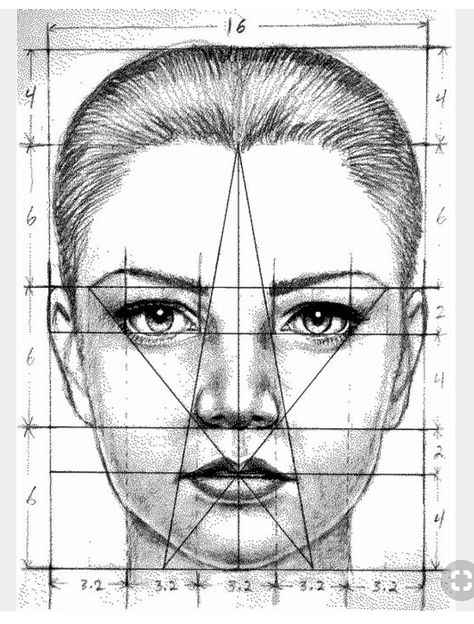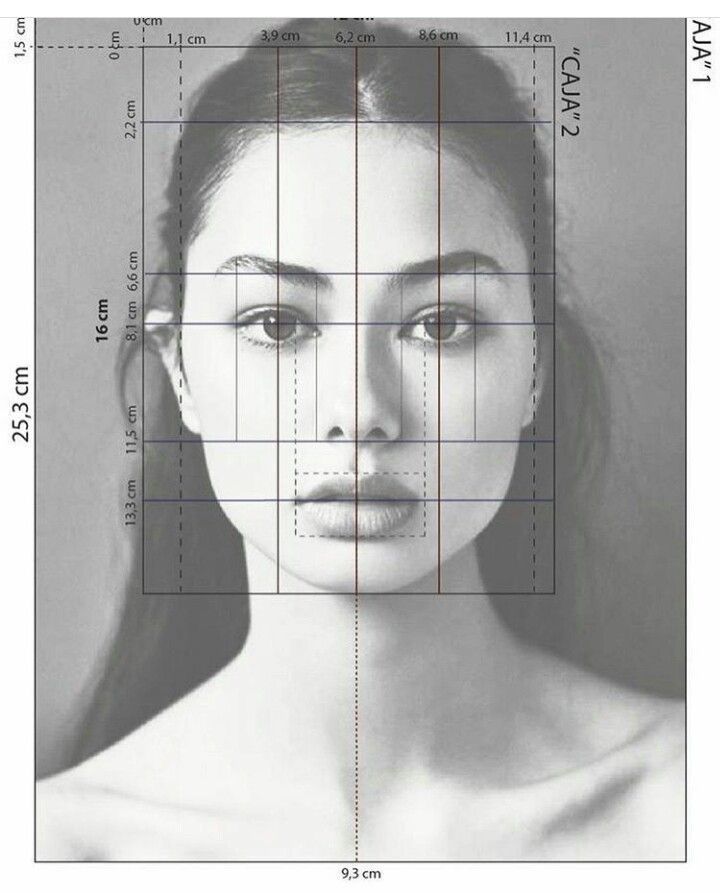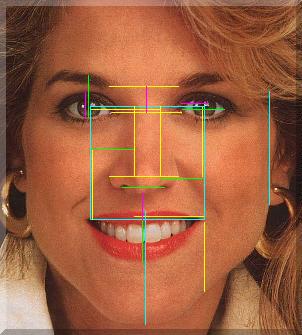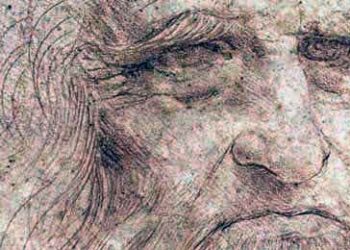The Golden Ratio: Mathematics and Human Beauty

In mathematics, the golden ratio, approximately equal to 1.618, is often denoted by the Greek letter ϕ or τ (Carlson, 2023). It represents the ratio of a line segment cut into two parts such that the ratio of the whole segment to the longer part is the same as the ratio of the longer part to the shorter one. This concept dates back to ancient Greece, where Euclid referred to it as the „extreme and mean ratio“ in Elements.
In modern algebra, the golden ratio is represented by the equation (x + 1)/x = x/1, where the shorter segment is one unit and the longer segment is x units. Rearranging this equation yields the quadratic equation x² – x – 1 = 0, with the positive solution x = (1 + √5)/2, which is the golden ratio.
Phi in the Human Face
The golden ratio appears frequently in the human face, providing insight into the design of facial features. According to Meisner (2012), the head forms a golden rectangle, with the eyes positioned near its midpoint. Furthermore, the mouth and nose are located at golden sections of the distance between the eyes and the bottom of the chin.
This principle can also be applied to a side profile. Similar golden proportions can be found when examining the face from different perspectives, highlighting how this mathematical ratio plays a role in facial structure.


The similar principles and proportions of the golden ratio can be discovered if we change our perspective and look at a profile of a face from the side view.


Human Beauty and the Divine Proportion
Numerous studies have linked the golden ratio to perceptions of beauty. A 2009 university study on attractiveness demonstrated that faces deemed particularly beautiful had more numerous, even proportions closely aligned with the golden ratio. In the following example, a „golden ruler“ is applied to an attractive face, showcasing the key ratios.

- The blue line forms a perfect square encompassing the pupils and the outer corners of the mouth.
- The golden section of the blue line defines several features, including the nose, nostrils, and upper lip, as well as key points on the ear.
- The yellow line, a golden section of the blue line, delineates the nose’s width, the distance between the eyes and eyebrows, and the space from the pupils to the nose tip.
- The green line, a golden section of the yellow line, marks the width of the eye and the distance from the lashes to the eyebrow.
- The magenta line, a golden section of the green line, defines the distance from the upper lip to the nose and other dimensions of the eyes.
Phi and the Teeth
Phi can also be found in the proportions of teeth. For example, the ratio of the width of the first tooth to the second tooth is equal to phi. Similarly, the width of the smile relative to the third tooth also corresponds to phi proportions.

Variations and Other Factors in Beauty
It’s crucial to note that these observations do not imply that all beautiful faces conform to a strict set of golden ratio proportions. There are „endless variations in beauty that are as unique as each individual.“ Moreover, a positive attitude can enhance beauty, as more elements of phi appear in our faces when we smile. Interestingly, symmetry, often considered a hallmark of beauty, does not always equate to attractiveness. Perfectly symmetrical faces can appear unnatural, while small imperfections and subtle variations in the arrangement of golden proportions often enhance a person’s appeal.
For instance, many of the proportions in Angelina Jolie’s face adhere to the golden ratio. However, her unique beauty lies in the small imperfections and individual differences that set her apart. A perfectly proportional face might appear more ordinary, lacking the complexity that makes her face captivating.

The Benefits of Being Attractive
Numerous studies suggest that attractive individuals receive „unfair, beneficial treatment“ in various aspects of life, such as business, school, and social interactions (Holmes Place, 2023). The advantages of beauty are observed across cultures, as certain facial features are universally deemed attractive. A University of New Mexico study found that „beauty and symmetry are related to intelligence,“ which can lead to better career prospects, higher incomes, and greater persuasive power.
However, some research indicates that highly attractive people may also face specific challenges. For instance, a study found that attractive individuals may be at a disadvantage in job interviews when the decision-makers are of the same sex (Dean, July 2022). Additionally, attractive people can experience social rejection from their same-sex peers and may be overlooked as romantic partners due to fears of rejection. Despite these drawbacks, the positive benefits of attractiveness typically outweigh the negatives, contributing to the continuous growth of the beauty and plastic surgery industries.
For more on the universal appeal of beauty and the benefits of being attractive, watch this video here.
What is Beauty?
Ultimately, we must ask ourselves whether the golden ratio is the sole criterion for defining beauty. The Cambridge Dictionary (2023) provides multiple definitions of beauty, including „the quality of being pleasing and attractive, especially to look at“ and „the business of making people look attractive, using makeup, treatments, etc.“ However, beauty can also be viewed beyond physical appearance. For instance, beauty can be „something that is an excellent example of its type,“ which can include a person’s character, skills, or personality traits. This broader understanding reminds us that beauty is subjective and personal—everyone can feel beautiful in their own unique way.
Sofie Neudecker, 27. 12. 2023
Sources:
Carlson, Stephan C. „Golden Ratio.“ Encyclopedia Britannica, Science and Tech, November 2023. https://www.britannica.com/science/golden-ratio.
Meisner, Gary. „The Human Face and the Golden Ratio.“ The Golden Number, May 2012.
https://www.goldennumber.net/face/.
Cambridge Dictionary. „Meaning of Beauty in Essential English Dictionary.“ Cambridge Dictionary, 2023. https://dictionary.cambridge.org/us/dictionary/english/beauty.
Holmes Place. „The Benefits of Being Beautiful: Does Looking Good Help You Get Ahead?“ Holmes Place, 2023. https://www.holmesplace.com/en/en/blog/lifestyle/looking-good-helps-you-get-ahead#:~:text=Looking%20Good%20In%20men%2C%20a%20strong%20jaw%3B%20in,healthier%2C%20wealthier%2C%20more%20socially%20dominant%20and%20more%20trustworthy.
Dean, Jeremy. „5 Disadvantages of Being Beautiful (Plus 5 Advantages).“ PsyBlog: Attractiveness, July 2022. https://www.spring.org.uk/2022/07/disadvantages-of-being-beautiful.php.
„Zwischen Botox und Body Positivity: Ist Schönheit Universell?“ Der Roter Faden, ZDF Info Dokus & Reportagen, March 2020. https://www.youtube.com/watch?v=2Q1v_Gmgu54.








